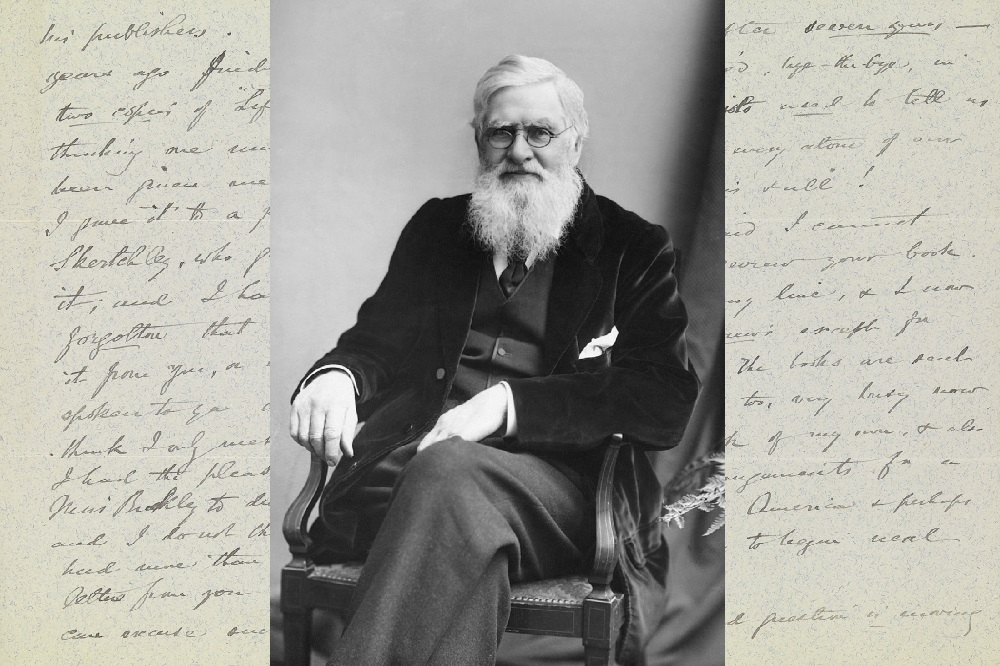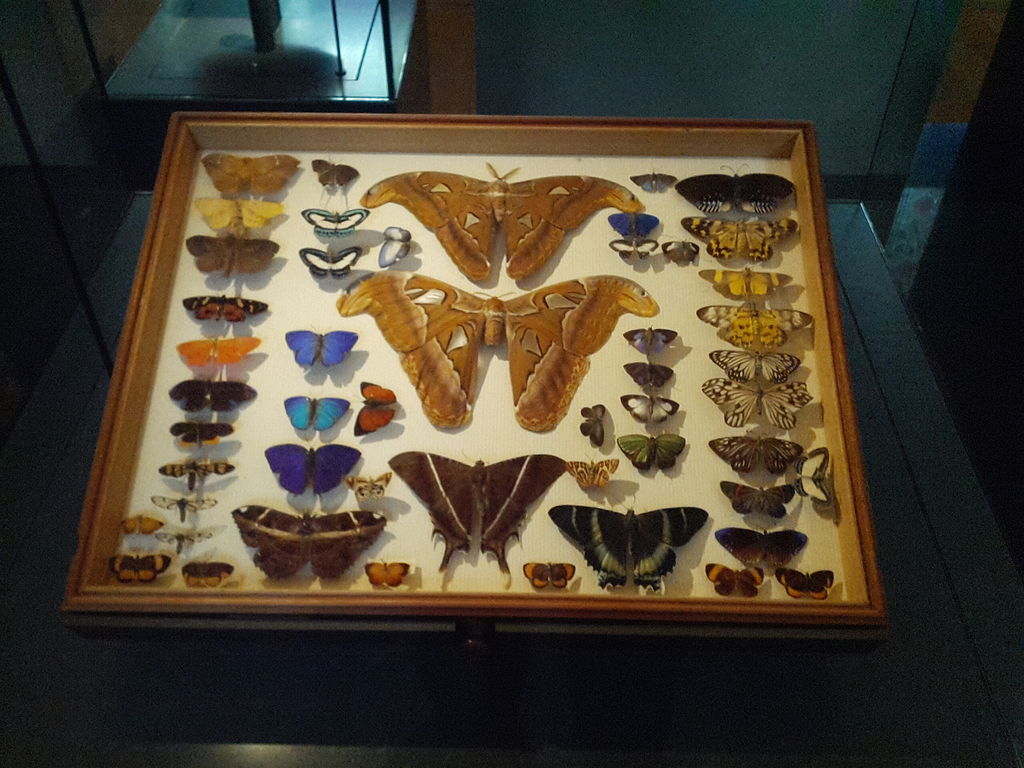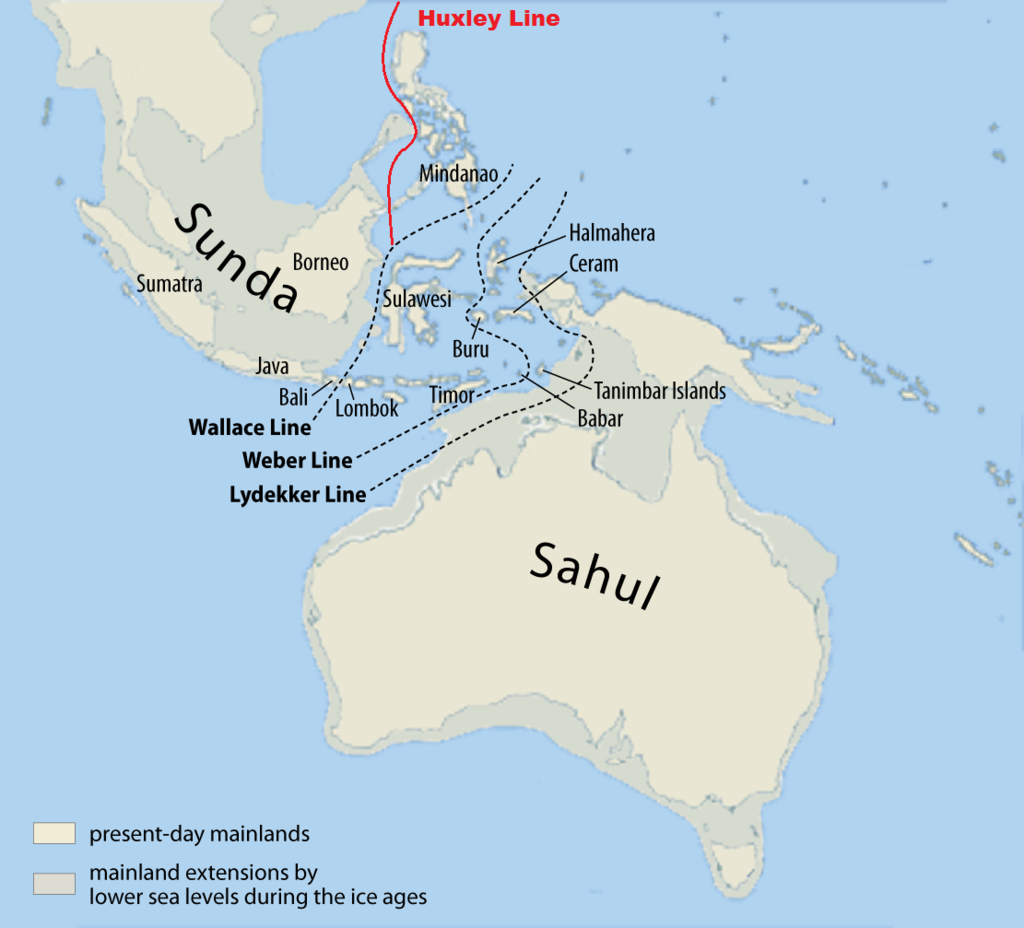Let’s celebrate a great Welsh scientist: Alfred Russel Wallace

Jon Gower
The name Alfred Russel Wallace is certainly not as well known as that of his contemporary Charles Darwin and yet he very much deserves to be.
The Usk-born scientist came up with a theory about natural selection at the same time as Darwin and, indeed, sent his pioneering ideas to him by letter. But the scientific world got to hear about them first from Darwin, and so he gets the credit.
Born 200 years ago this week, Wallace was much more than a scientist.
He had so many labels he might have gainfully have invented a label machine for his own use – he was an avid and much travelled explorer, an inveterate collector, a glaciologist, an accomplished naturalist, skilled amateur geographer, keen anthropologist and political commentator.

Adaptation and change
But Alfred Russel Wallace’s greatest claim to fame was having the revolutionary idea of evolution by natural selection entirely independently of Charles Darwin.
So what is natural selection? It is the process through which populations of living organisms adapt and change. Two robins in the garden, say might look the same but there will be variations.
This variation means that some individuals have traits better suited to the environment than others and over time, these advantageous traits become more common in the population.
Through natural selection these can then be transmitted through generations and lead in turn to the creation of species, contributing to the biodiversity of the planet.
One day in 1858, while feverish and confined to his hut on the island of Ternate (now in Indonesia), Wallace came to a startling conclusion.
In his fever dream he came to understand how species evolved – they changed because the fittest individuals survived and reproduced, passing their advantageous characteristics on to their offspring. It’s the sort of huge, ground-breaking idea that makes you wake in a cold sweat.
Wallace immediately wrote to someone he knew was interested in the self-same subject, Charles Darwin.
Two men, same idea
Unbeknown to Wallace, Darwin had been working on the very same theory for some two decades, but had yet to publish his thoughts.
Darwin sought the advice of his friends, who determined that their ideas should be presented at a meeting of the Linnean Society in London. Darwin’s masterpiece of a book, The Origin of Species, came out the following year.
From that time on, Darwin overshadowed Wallace and it has usually been his name alone that is associated with the theory of evolution by natural selection, even to the extent of its being called Darwinian theory.
It was entirely to Wallace’s credit that he showed no resentment about this. Indeed, it was quite the opposite as he became and remained Darwin’s greatest fan and they became friends.
Nevertheless, his contribution to such ground-breaking thinking, coupled with Darwin’s support, ensured his entry to the highest ranks of the scientific establishment.
Charles Darwin was very much impressed with how closely Wallace’s theory of natural selection matched his own: ‘He could not have made a better short abstract! Even his terms now stand as heads of my chapters!’
So who was Wallace?
Wallace was born in 1823 in Usk (now in Monmouthshire). After leaving school he helped at his brother’s surveying firm until he was hired as a teacher in Leicester in 1844.
That same year he formed an important friendship with a local man and keen naturalist, Henry Walter Bates who introduced Wallace to the methods and delights of collecting beetles. It soon became an obsession of his.
Four years later the pair headed for the Amazon, having been inspired by stories of discovery in the New World and Oceania.
Amazon adventurers
Wallace and Bates arrived at the wide mouth of the mighty river Amazon in Brazil in 1848.
Their aim together was to investigate the origin of species, having financed the long and testing trip by collecting specimens along the way and selling them.
After a short time exploring together, the two men went their separate ways in order to cover more ground. Wallace travelled north by river, collecting in areas previously unexplored by any European naturalists, or indeed, any Europeans.
He diligently gathered simply thousands of animal specimens, mostly birds, beetles and butterflies.
Fire at sea
After more than four years collecting, Wallace sailed back to England but disaster struck as he crossed the high seas.
The ship he was on caught fire as it crossed the Atlantic and it sank, along with virtually all his specimens and field notes. Fortunately, the crew and passengers were rescued by a passing ship.
Undaunted, Wallace started planning his next expedition almost immediately. Within a year he left England again and set sail for the Far East. He was nothing if not determined and tenacious.

Indefatigable traveller
Wallace began his extensive travels through the Malay Archipelago (now Malaysia and Indonesia) in 1854.
Over a period of eight years, he accumulated an astonishing 125,660 specimens, including more than 5,000 species which were new to western science. He collected 80,000 beetles alone.
As he travelled and collected Wallace noticed a striking pattern in the distribution of animals around the Malay archipelago. These prompted him to proposed an imaginary line dividing the region in two parts.
This was to become known as Wallace’s Line, marking the boundary between the animal life of the Australian region and that of Asia.
On returning home, Wallace published a travel book, The Malay Archipelago.
His vivid account of the beautiful, undisturbed islands opened up a whole new world to enchanted readers and armchair travellers, who delighted at his colourful descriptions of birds of paradise and orangutans, and encounters with local inhabitants.
But he was also helping to reshape thoughts about other parts of the world.
Wallace made two key contributions that still shape thinking about Amazonia, the world’s most biodiverse region, which covers parts of Bolivia, Brazil, Colombia, Ecuador, Peru, Venezuela, Guyana, Suriname and French Guiana.
Not monkeying around
On 14 December 1852, Wallace read out his manuscript ‘On the monkeys of the Amazon’ at a meeting of the Zoological Society of London.
In this study, which was later published, Wallace relays observations that form the basis of the most debated hypothesis for how Amazonian organisms diversified: the riverine barrier hypothesis.
His paper refers to the large Amazonian rivers as spatial boundaries to the ranges of several primate species. “I soon found that the Amazon, the Rio Negro and the Madeira formed the limits beyond which certain species never passed,” he writes.
Since 1852, Wallace’s notion that large rivers could act as geographical barriers that shape the distribution of species have been variously confirmed, criticized and debated by many. There is no consensus other than it’s a strong and plausible idea.
Disarming spiritualist
Wallace and Darwin did not agree on everything. Wallace, to the discomfort of many contemporaries, was a spiritualist, which was in keeping with the Victorian age, with its belief and interest in ghosts and the afterlife.
Wallace believed that natural selection could not explain the human intellect, and that the human spirit persisted after death. Darwin thought otherwise.
A restless and tireless thinker, Wallace wrote widely on spiritualism and other diverse topics including land ownership, workers’ rights, law, economics and museums. By the time of his death, Wallace had produced more than 20 books as well as over 1,000 articles and published letters.
Deep Welsh roots
His autobiography (My Life) published in 1905 shows how Wales remained important to him throughout his days.
In it he extolled the virtues of the Welsh language and culture, quoting at length remembered extracts from the Welsh Bible. He indicated his support for Welsh Home Rule and favoured the teaching of scientific topics through the medium of Welsh.
A few weeks before his death, his physical weakness prompted him to write to the family at Bryn Coch, Neath (a farm where he had lodged sixty years previously), requesting samples of sucan blawd and bara maen in the hope that traditional Welsh foods would restore him to his usual robust health and that despite all the tests and travails of travel.
After his passing the prestigious scientific journal Nature referred to ‘the death of one of the century’s most distinguished biologists’ – an assessment which few would challenge, although it is also fair to suggest that he was much, much more than just a biologist.
Alfred Russel Wallace was more of a Renaissance man, with an intellectual energy and curiosity few could match. Or as he himself said: ‘In my solitude I have pondered much on the incomprehensible subjects of space, eternity, life and death.’
Support our Nation today
For the price of a cup of coffee a month you can help us create an independent, not-for-profit, national news service for the people of Wales, by the people of Wales.





Excellent read, we need reminding…I wonder if Wallace ever visited Darwin at Plas Caerdeon?
Another example of a famous Welshman who should be known far and wide, yet had his place taken by Darwin, who used most of his Research as his own. And Wallace being Welsh showed that terrible trait that often inhabits the Welsh Psyche…and that is, don’t upset the apple cart! Even when it’s required and righteous to do so! George Everest said the same thing, as did George Henry Thomas of the union army during the American Civil war…hence why Sherman and Grant became famous and Thomas never.
“yet had his place taken by Darwin, who used most of his Research as his own.”
You’re very much mistaken.
I doubt it was a case of “Welsh Psyche” but rather class psyche. Darwin being an independently well connected and formally educated ‘gentleman’ and Wallace being a working man gathering specimens for rich collectors of insects etc.
Darwin delayed publishing his theory of evolution by natural selection for years because he wanted to be sure, Wallace was sure and bold and did not hang about. Fortune favours the bold but not if the less bold are well connected and have friends with influence. Wallace was basically “stitched up” by Darwin’s scientist mates. They probably wanted Darwin to submit his unpublished work in his name alone but Darwin refused though the resulting joint presentation was to have Darwin’s name in front of Wallace’s. Darwin was an exceptional scientist but Wallace deserved to be the first name on the… Read more »